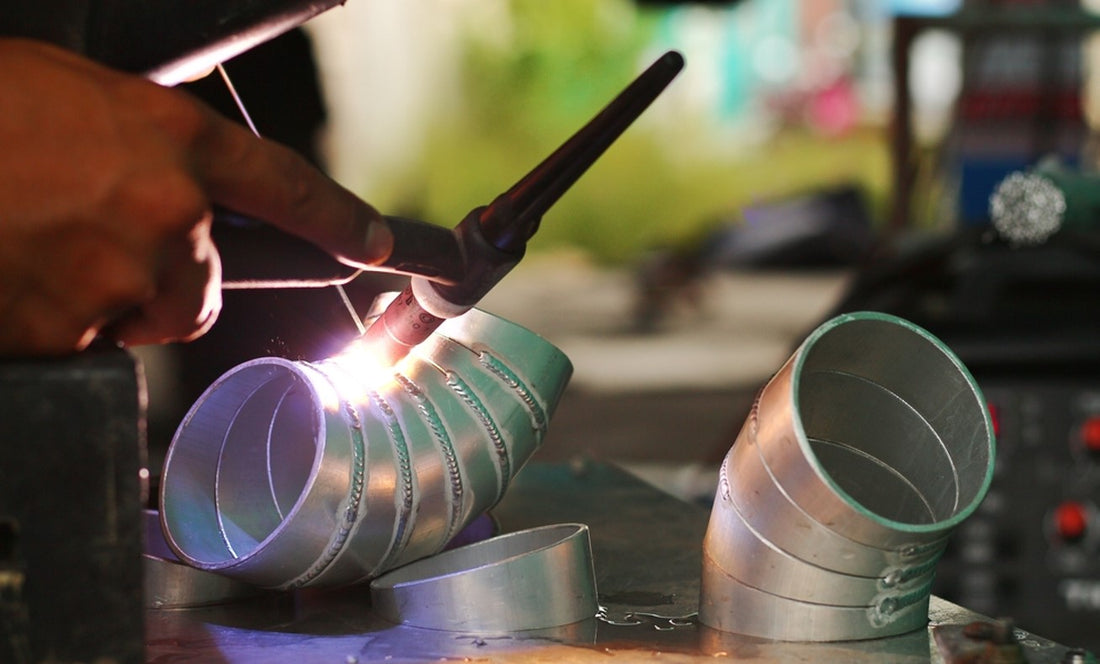Aluminum is one of the most versatile metals on the planet. It’s strong, lightweight, resistant to corrosion, and inexpensive compared to many other metals on the market.
However, all of these things that set aluminum apart as a metal can also make it more challenging to work with, especially if you’re new to welding. Aluminum can pose many challenges depending on the process you end up going with.
This guide breaks down some common pitfalls you’ll likely encounter when working with aluminum.
One of the ways to avoid major pitfalls when working with any type of metal is to know as much about it as possible. We are breaking down the different options you’ll have when it comes to gasses you can use during the aluminum welding process.
We’ll also talk about common mistakes people make when welding aluminum, which processes will likely go over the smoothest, and more.
What Type of Gas Should I Use for Aluminum Welding?
Let’s get right to it: What gas should you use to weld aluminum? There are two main gasses used when doing a TIG weld with aluminum: argon and helium. Both have their pros and cons.
Argon better protects the welding process from unwelcome guests, like that pesky hydrogen we discussed earlier. However, it doesn't have as high heat potential as helium.
So, if you’re struggling to penetrate your aluminum with your weld, you might want to go with a helium-heavy mix of helium and argon, if not just straight helium.
However, if porosity is a concern, then argon might be your better pick. Here is an educational video you can check out if you’re interested in learning more.
Aluminum Can Be Tricky to Weld
We mentioned many reasons why aluminum is a fantastic and versatile metal, but why do some of these traits make it difficult to weld with? Well, first and foremost, we need to discuss its oxide layer.
This layer is harder than aluminum itself, and it’s what makes the metal so resistant to corrosion. It’s essentially an almost impervious coating that protects the metal from effects like rust, scratching, and more.
However, this oxide layer can also prove challenging to work with for welders because of its high melting temperature of 3,700 degrees.
This high temperature means that when welding with aluminum, its oxide layer can effectively act as an insulator. This can lead to heat rising underneath the layer and causing issues such as becoming superheated and unstable.
Some other issues plaguing welders who want to use aluminum are its tendency to form holes or porosity. Due to its nature, molten aluminum absorbs hydrogen, and sometimes when the metal hardens, the hydrogen cannot escape and forms bubbles. This leads to a weld full of holes and far weaker and more brittle than it should be.
The other major issue that rears its head when welding aluminum is that the metal has a high degree of thermal conductivity. For the lay people reading this, heat travels through aluminum very efficiently.
This can prove detrimental to the welding process because as you apply heat through your welding torch, said heat is continually being sapped away by the colder parts of aluminum. In other words, it’s difficult for the weld to penetrate aluminum.

Aluminum Welding Processes
Now that we know the main issues of welding aluminum, we can find a welding process to address them. Many welding processes can be used when working with aluminum. However, some of them are easier than others. In this section, we’ll break down possible welding processes and discuss their overall difficulty for beginners.
MIG Welding
Also known as gas metal arc welding, MIG welding uses a continuously fed wire electrode shielded in an inert gas to prevent the harmful effects of oxidation during the weld.
If you’re an experienced welder, you might feel comfortable using this method when working with aluminum. However, it can be messy for beginners due to the possibility of creating lots of little molten metal beads during the process.
Arc Welding
A classic welding technique that almost every welder learns at some point in their life, arc welding uses a steady power supply to melt through aluminum and join it to whatever you need. While this is the cheapest way to weld aluminum, it can be quite difficult and mistakes are common.
Tungsten Inert Gas (TIG) Welding
Otherwise known as gas tungsten arc welding, this is our preferred welding method for aluminum because this process addresses the two big problems of working with aluminum.
It allows for a high heat input that will be able to better deal with aluminum’s high thermal conductivity, for one. This means you can get deep penetration into the metal and make it molten where it needs to be. It also feeds a steady supply of gas to shield the welding process.
This will help keep excess hydrogen at bay so that those porosity issues won’t occur as easily. For a clean weld, this is our best pick. However, TIG welding is one of the most complex welding types, so keep that in mind before jumping straight in.

What Else Is There to Know About Welding Aluminum?
Aluminum is a tough nut to crack if you have yet to weld it, but once you’re armed with the proper knowledge, we’re confident you can get the job done. We hope this article proved helpful and informative to you about all the challenges you might face when welding aluminum and how best to deal with them.

